Saatva vs Tempur-Pedic − which mattress brand is best?
I set the Saatva Latex Hybrid and the Tempur-Pedic ProAdapt head to head to see which mattress offers the best performance at the best price
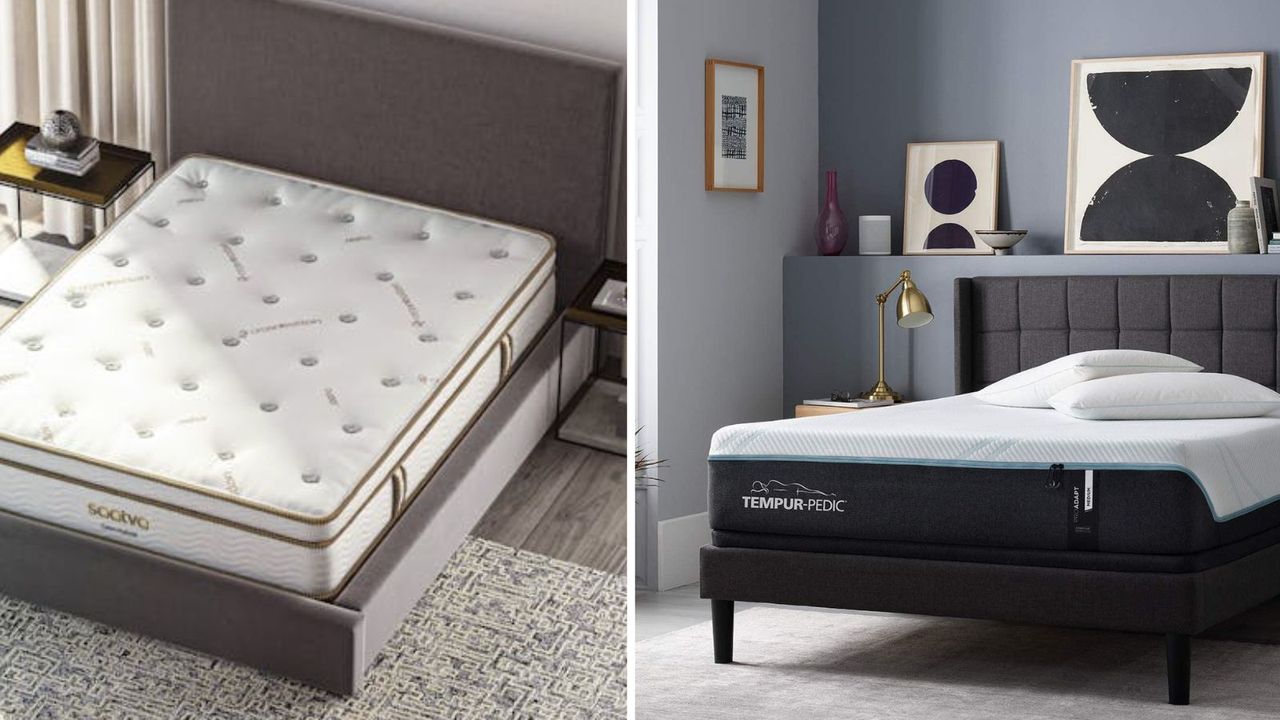

Saatva and Tempur-Pedic are two of the biggest names in sleep, renowned for their wide range of innerspring, memory foam, and hybrid mattresses. To help you split the difference between the brands, I'm setting Saatva vs Tempur-Pedic head to head.
In the interests of fair comparison, I'm choosing a similar mattress from each store. I've landed on the Saatva Latex Hybrid Mattress (one of our top contenders for the title of best mattress) and the Tempur-Pedic ProAdapt Mattress.
Here at Homes & Gardens, we assess each mattress against the same criteria: pressure relief; thermoregulation; motion isolation; and edge support. If these terms are new to you, you can cross-reference against our mattress jargon buster. Although the Tempur-Pedic ProAdapt edges most of our categories, the Saatva Latex Hybrid Mattress takes the title for value for money.
Saatva vs Tempur-Pedic – which is best on test?
Before we begin, I'd like to introduce our two testers. Alex Frost, one of our most prolific freelance product testers, sampled the Saatva Latex Hybrid Mattress. Jaclyn Turner, our former Sleep Editor, tested the Tempur-Pedic ProAdapt Mattress.
Saatva vs Tempur-Pedic – Head to head

Price: $1,399 - $3,298
Firmness: Medium
Type: Hybrid
Sizes: Twin, Twin XL, Full, Queen, King, Split King, California King
Sleep trial: 365 nights
Warranty: Lifetime
Delivery: Free in-room delivery and setup
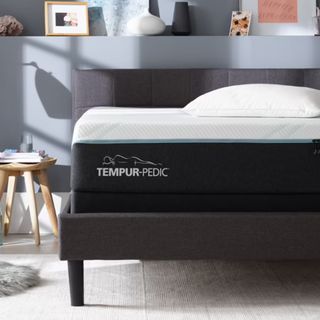
Price: $2,899 - $5,798
Firmness: Medium
Type: Hybrid
Sizes: Twin, Twin Long, Full, Queen, King, Split King, California King, Split California King
Sleep trial: 90 nights
Warranty: 10 years
Delivery: Free in-room delivery and setup
Saatva vs Tempur-Pedic – Pressure relief

WINNER: Tempur-Pedic
Jaclyn tested the Tempur-Pedic ProAdapt in Medium Hybrid: 'I felt a slight sinking feeling as the mattress conformed to my shape, but I always felt supported and I found it easy to move from one side to the other.'
The Tempur-Pedic ProAdapt comes in multiple mattress firmness levels to suit every style of sleeper. Side sleepers might prefer the plush comfort of a Soft mattress, while stomach sleepers would appreciate the enhanced support of a Firm feel.
That's not to say that the Saatva Latex Hybrid is uncomfortable: far from it. In fact, 'until I started testing, I hadn't realized how much my old, firm and inflexible mattress had exacerbated my back pain,' says Alex. 'I needed something softer, but still supportive, to maintain the natural alignment of my spine, and the medium feel of the Saatva Latex Hybrid Mattress was just the ticket.'
Saatva vs Tempur-Pedic – Thermoregulation
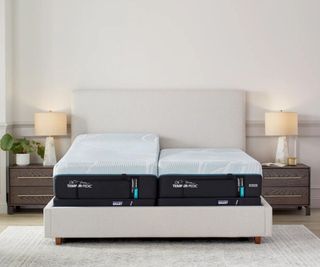
WINNER: Tempur-Pedic
It's a close contest: Tempur-Pedic and Saatva are neck-and-neck in our best cooling mattresses buying guide, but the Tempur-Pedic ProAdapt just takes the victory.
The winning mattress comes wrapped in a stretch-knit cover that feels cool to the touch. Beneath the memory foam comfort layer, you'll find more than 1,000 stainless steel springs, which boost airflow as they compress and depress beneath your body weight. 'When I started testing this mattress, it was the height of summer in Atlanta, Georgia,' Jaclyn recalls, but the Tempur-Pedic ProAdapt managed to keep me cool and comfortable.'
Like the Tempur-Pedic ProAdapt, the Saatva Latex is a hybrid mattress, founded on steel springs and topped with plush foam. Where Tempur-Pedic uses memory foam, which often traps a little heat, Saatva uses natural latex to boost breathability through the bed. ' I tend to sleep with my face directly down on the mattress, so I appreciate cooling properties more than most,' says Alex. 'Sleeping through summer in Cincinnati, Ohio, I never once overheated on the Saatva Latex Hybrid.'
Saatva vs Tempur-Pedic – Motion isolation
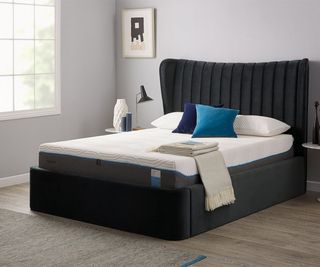
WINNER: Tempur-Pedic
Only just. The Saatva Latex Hybrid also boasts excellent motion isolation. To assess motion transfer, Alex filled a glass with water and set it in the middle of the mattress, before inviting all four of her toddlers to jump around the open cup. 'In spite of their shenanigans, no water spilled over the sides of the glass, which barely ever tottered,' Alex reports. 'That's good news for light sleepers and anyone who shares a bed with a pet or partner.'
Jaclyn conducted her own version of the motion isolation test on the Tempur-Pedic ProAdapt. 'Remember that Tempur-Pedic ad from the early 2000s, where the woman jumps around the bed, perilously close to a full glass of red wine, and never spills a drop?' she asks. 'That's our inspiration for the Homes & Gardens motion isolation test. The Tempur-Pedic ProAdapt sets the gold standard: I'd happily recommend it to couples and light sleepers.'
Saatva vs Tempur-Pedic – Edge support
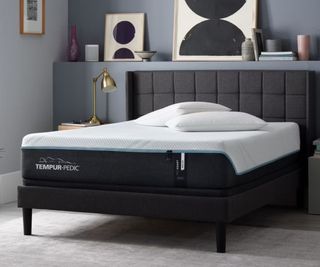
WINNER: Tempur-Pedic
In this category, and this category alone, Saatva and Tempur-Pedic aren't so evenly matched. 'Although it felt comfortable to lie on the side of the Saatva Latex Hybrid, the mattress edge could not hold me when I sat and concentrated my weight in a smaller surface area,' says Alex. 'I couldn't even sit on the edge of the bed to put my sneakers on.'
Jaclyn acknowledges that 'many a good mattress falls down in the edge support test. Luckily, the Tempur-Pedic ProAdapt Medium Hybrid Mattress features a row of reinforced steel coils around the sides of the bed for enhanced edge support. This makes it much more comfortable to sit or sleep at the side of the bed.'
Saatva vs Tempur-Pedic – Practical points

WINNER: Saatva
Both the Saatva Latex Hybrid and the Tempur-Pedic ProAdapt Mattress come with complimentary white glove delivery. Someone will come to help remove your old mattress, carry your new mattress into the room of your choice, and get it all set up for you. This is above and beyond the level of service you get from box mattress brands, and it's well worth taking advantage, especially if you struggle moving heavy weights on your own.
Where Tempur-Pedic only offers a 90-night mattress sleep trial, Saatva offers 365 nights. That gives you a whole year to sample your mattress through all four seasons before you commit to your purchase.
Where Tempur-Pedic offers a 10-year limited mattress warranty, covering all the usual defects in materials and manufacture, Saatva offers a lifetime warranty.
Saatva vs Tempur-Pedic – Which should I buy?
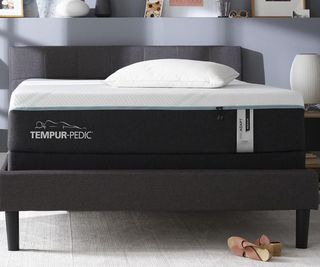
If you're working with a tighter budget, you should opt for the Saatva Latex Hybrid. This mattress excels at pressure relief, thermoregulation, and motion isolation. Although the edge support is a little lacking, the longer sleep trial and warranty makes up for it. Plus, a Queen-sized Saatva Latex Hybrid costs more than $1,000 less than a Tempur-Pedic ProAdapt.
If money is no object, and you just want to buy the best mattress, I suggest you stick with the Tempur-Pedic ProAdapt. Just edging the victory for pressure relief, thermoregulation, and motion isolation, and running away with the title for edge support, the Tempur-Pedic ProAdapt gets top scores across the board.
How we test mattresses
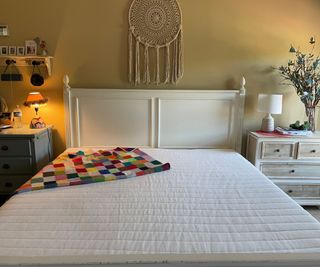
As the resident Sleep Editor at Homes & Gardens, I lead a team of expert testers in the search to find the world's best mattress. Together, we represent a wide range of ages, body types, and sleep styles, and we live right across the country in all sorts of climates. We sample each mattress in our own homes for a minimum of 30 nights to give a good indication of long-term performance.
We assess each mattress against the same criteria: pressure relief; thermoregulation; motion isolation; and edge support. To assess pressure relief, we lie on a mattress and switch between our stomach, back, and sides, considering how comfortable and supportive the mattress feels in each position. To assess thermoregulation, we switch off our HVAC to sleep through all conditions, making note of any nights where we wake up in a sweat.
To assess motion isolation, we fill a glass with water and set it in the middle of the mattress. Then, we take a weight and apply pressure around the mattress, moving incrementally closer to the glass. The more the glass moves, the more water spills, indicating poor motion isolation, which might prove problematic for couples and light sleepers. To assess edge support, we sit on the side of the mattress and measure how far we fall. The further we sink, the worse the edge support, and the harder it might be to get into and out of bed.
We also consider the practical side of buying a mattress, including the length of the sleep trial, the details of the warranty, and the ins and outs of delivery. Finally, we compare the performance of the mattress against the price to help you determine value for money. To learn more about how we test mattresses, consult our expert guide.
Sign up to the Homes & Gardens newsletter
Design expertise in your inbox – from inspiring decorating ideas and beautiful celebrity homes to practical gardening advice and shopping round-ups.

Emilia is our resident sleep writer. She spends her days tracking down the lowest prices on the best mattresses and bedding and spends her nights testing them out from the comfort of her own home. Emilia leads a team of testers across America to find the best mattress for every sleep style, body type, and budget.
Emilia's quest to learn how to sleep better takes her all around the world, from the 3Z mattress factory in Glendale, Arizona to the Hästens headquarters in Köping, Sweden. She's interviewed luxury bedding designers at Shleep and Pure Parima, as well as the Design Manager at IKEA. Before she joined Homes & Gardens, Emilia studied English at the University of Oxford.
You must confirm your public display name before commenting
Please logout and then login again, you will then be prompted to enter your display name.
-
 These are the iconic 90s kitchen trends that are still stylish in 2025, according to designers
These are the iconic 90s kitchen trends that are still stylish in 2025, according to designersThese nostalgic kitchen features are the gifts that keep on giving, even 30 years later, and designers are urging us to bring back some iconic 90s styles
By Molly Malsom Published
-
 Martha Stewart's Easter display features orchids, tulips, and glass bunnies – 13 years later, it's still as whimsical (and surprisingly easy to recreate)
Martha Stewart's Easter display features orchids, tulips, and glass bunnies – 13 years later, it's still as whimsical (and surprisingly easy to recreate)In 2012, Martha set the standard for eccentric yet accessible Easter decor – and her displays are just as inspiring this springtime
By Megan Slack Published